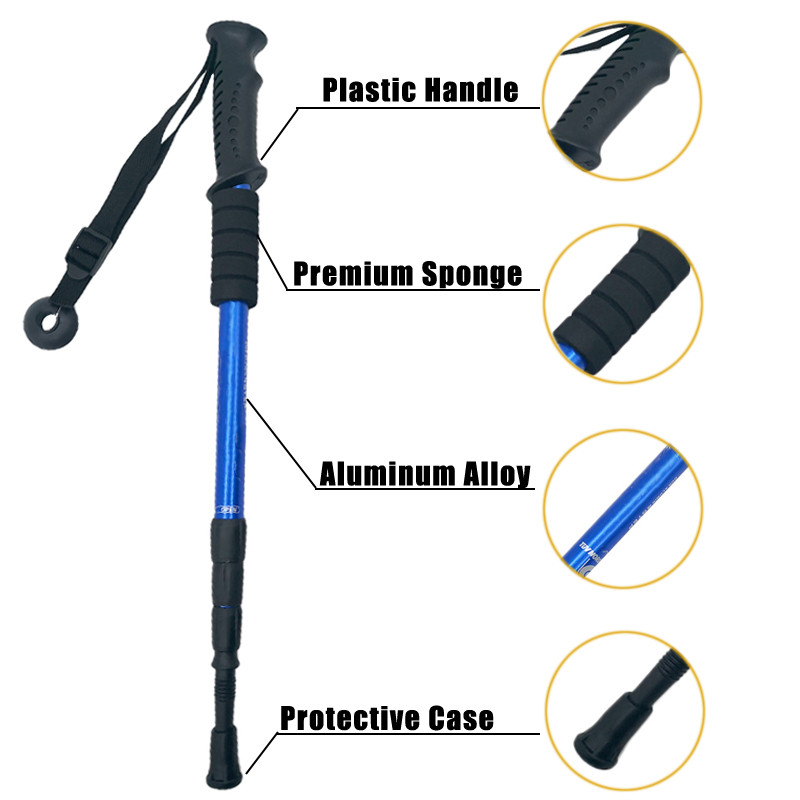In the stereotype of everyone, only elderly hikers would use trekking poles. But in fact, trekking poles, as an auxiliary device during mountaineering, can improve walking stability.
Using trekking poles when walking can reduce the force applied to muscles and joints such as the legs and knees, and make the legs feel more comfortable. The correct use of trekking poles can make the journey easier and more enjoyable.
Using two trekking poles at the same time can provide better balance.
But these are just two rods. Do you really know the correct usage of them?
In general three-section trekking poles, the two sections from the tip of the pole can be adjusted.
When adjusting trekking poles, you should not exceed the maximum adjustment length shown on the trekking poles. When purchasing trekking poles, you can adjust the length first to determine whether you can buy trekking poles of suitable length.
Standing on a plane with a trekking pole in hand, adjust the length of the trekking pole, with your arms hanging down naturally, and using your elbow as a fulcrum, raise your forearm to 90° with your upper arm. Then adjust the tip of the trekking pole downward to touch the ground; or place the head of the trekking pole 5-8 cm under the armpit, and then adjust the tip of the trekking pole downward until it touches the ground. Tighten all the poles of trekking poles. The other unadjusted trekking pole can be adjusted to the same length compared to the trekking pole with the locked length.
The strongest state of the three-section adjustable trekking pole is when the three-section poles are of the same length, so do not only extend one of the poles without using the other one.
The best way to use it is to adjust the other two extendable poles to the same length, which can ensure the support strength of the trekking poles and increase the service life of the trekking poles.


